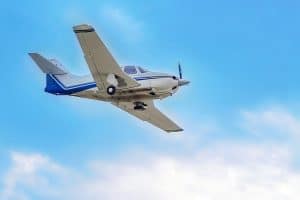NTSB Makes Recommendations for Improving Alaska Air Safety
 In an effort to make flying in some of the most dangerous air space in the U.S. safer for pilots and passengers, the National Transportation Safety Board wants pilots flying in Alaska to be required to report their positions and direction on existing or new radio frequencies.
In an effort to make flying in some of the most dangerous air space in the U.S. safer for pilots and passengers, the National Transportation Safety Board wants pilots flying in Alaska to be required to report their positions and direction on existing or new radio frequencies.
Noting the continued high frequency of fatal in-flight aircraft collisions in Alaska, the NTSB in February urged the Federal Aviation Administration to mandate new in-flight communications requirements on all aircraft being operated outside of air traffic control managed airspace.
In May 2014, the FAA, acting on earlier NTSB recommendations, established “common traffic (radio) advisory frequency” (CATF) areas in several areas of Alaska for pilots to communicate with each other in flight. But the NTSB said in its February 22 report that pilots are not required to report their positions en route and often do not do so.
The NTSB, which investigates transportation accidents, recommended that the FAA require that all pilots be mandated to use the existing radio frequencies and that additional frequencies be created in other areas of the state. The FAA is the agency responsible for writing and implementing all air safety regulations in the U.S.
Due to the vast size of Alaska, smaller general aviation aircraft are a vital part of the state’s economic system. Planes ferry business owners, passengers, medical patients, and cargo between remote towns and villages. Tourist flights over, around, and into remote areas are extremely popular.
Only 13 airports in Alaska have FAA-operated air traffic control towers that monitor nearby flights and communicate with pilots. Many other local airports around the state are subject to active, daily use.
Pilots of many Alaskan flights operate under visual flight rules. They must actively look to avoid other aircraft, which is risky due to blind spots and human error. Pilots also could benefit from position reporting to facilitate reports of low-visibility or deteriorating weather conditions.
Between 2005 and 2020, 14 mid-air collisions occurred in Alaska skies, 12 in controlled airspace. Those accidents resulted in 35 deaths and 15 serious injuries. Four mid-air collisions have occurred since the FAA implemented radio frequencies for voluntary flight reporting.
The frequency of a deadly Alaskan airplane crashes was the subject of an investigative news report by Pro Publica in June 2021.
One of the accidents highlighted in the report was the May 13, 2019, collision of two sightseeing aircraft near Ketchikan. The pilot and all four passengers aboard one aircraft died; one passenger was killed and the pilot and all nine other passengers aboard the second aircraft were injured.
Michael Slack, founding partner of Slack Davis Sanger LLC, has represented passengers and families of accident victims in litigation stemming from several Alaska aviation accidents, including passengers injured when a Taquan Air pilot collided with fog-shrouded Jumbo Mountain and the family of the pilot in above-mentioned May 2019 in-flight collision caused by a Taquan Air pilot unaware of his proximity to the other aircraft. Slack said the proposed recommendations would have significantly reduced the likelihood of both accidents.
Contact Slack Davis Sanger at 800.455.8686 or fill out our contact form.
